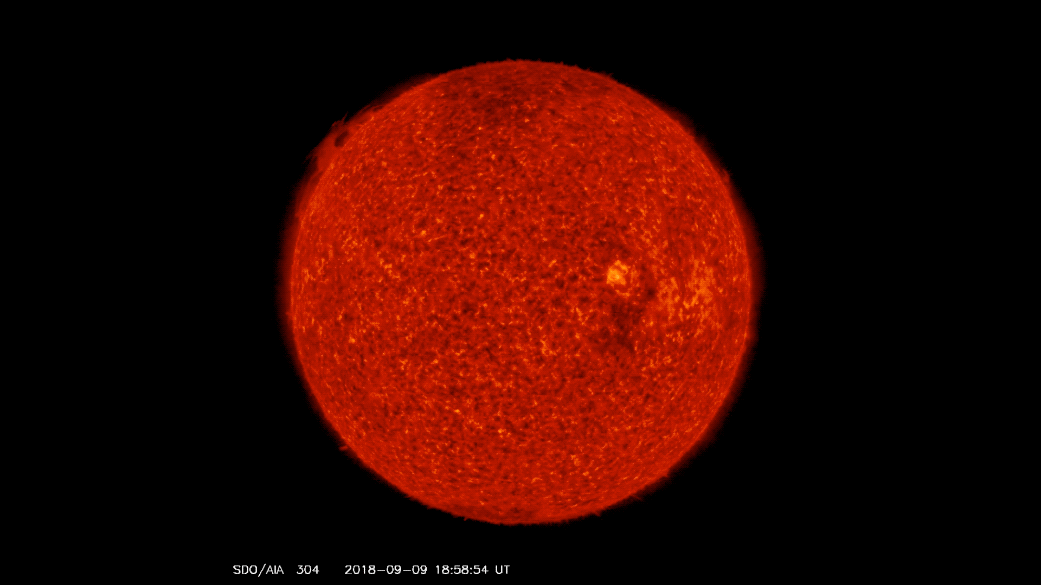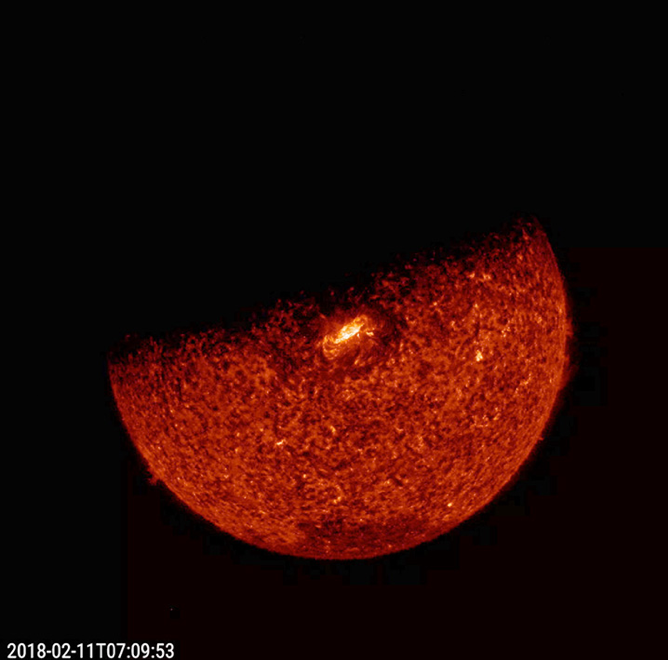By Steele Hill
NASA’s Goddard Space Flight Center
On Sept 9-10, NASA’s Solar Dynamics Observatory witnessed a double lunar transit, when the Moon passed between the SDO spacecraft and the Sun twice in just a few hours.

But did you know that the Earth can also get in the way? Here’s how Earth and Lunar transits work — and why they look surprisingly different.
Due to SDO’s inclined circular orbit 23,000 miles above Earth, the Moon passes between SDO and the Sun between 2 and 5 times each year. While these transits block conventional observations of the Sun, we use them to understand the cameras in our instruments. One of these transits will someday block out an active region during a flare so that we can study the energy in that region with our instruments.
There are two periods during the year when the SDO spacecraft repeatedly has its view of the Sun either partially or fully blocked by Earth. Eclipse seasons last about three weeks, and each eclipse takes about an hour or so from beginning to end. SDO’s 48-hour movies use a cadence of one image every 15 minutes. So, when these eclipses occur, the few black frames appear for about a second or less, just a short blip.
Interestingly, when the Moon begins to block the Sun, the Moon’s edge appears very sharp. However, when Earth blocks part of the Sun, the edge is clearly uneven. This is because the upper parts of Earth’s atmosphere provide inconsistent absorption of the Sun’s light, whereas the Moon has no atmosphere, so we just see the crisp horizon of the Moon. You can see the difference in the images below.


The fall 2018 eclipse season ran from August 12 through September 4. Aside from the double transit September 9–10, there will be one more on November 7.
Keep watching the Sun! You can see it all day, every day at sdo.gsfc.nasa.gov

